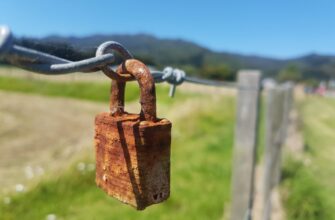## Introduction
In the fast-paced world of cryptocurrency, finding ways to farm Sol low risk is a top priority for savvy investors. Solana (SOL) is a high-speed blockchain known for its low fees and scalability, making it ideal for yield farming—earning rewards by providing liquidity or staking tokens. However, crypto markets are volatile, and high-risk strategies can lead to significant losses. This guide focuses on low-risk approaches to farm Solana, helping you generate passive income while minimizing exposure to market swings. We’ll cover proven methods, step-by-step instructions, and essential FAQs to empower your journey into secure Solana farming.
## What is Solana Yield Farming?
Yield farming on Solana involves lending or staking your SOL tokens or other assets in decentralized finance (DeFi) protocols to earn rewards, often in the form of more SOL or other tokens. Unlike high-risk trading, low-risk farming prioritizes stability through strategies like staking with reputable validators or using stablecoin pairs. Solana’s ecosystem, with platforms like Marinade Finance or Raydium, offers efficient, low-fee opportunities, but it’s crucial to choose options that align with a conservative risk profile to protect your capital.
## Why Focus on Low-Risk Strategies?
Cryptocurrency investments carry inherent risks, including market crashes, smart contract vulnerabilities, and impermanent loss in liquidity pools. By opting to farm sol low risk, you prioritize capital preservation and steady returns. Benefits include:
– **Reduced Volatility Exposure**: Sticking to stable assets or established protocols lessens the impact of SOL price swings.
– **Passive Income Stability**: Low-risk methods often provide predictable APY (Annual Percentage Yield), ideal for long-term growth.
– **Lower Stress**: Avoid the emotional toll of high-stakes gambling, focusing instead on sustainable wealth building.
– **Beginner-Friendly**: These strategies are accessible, requiring minimal technical expertise, perfect for newcomers to DeFi.
## Top Low-Risk Ways to Farm Solana
Here are four effective, low-risk strategies to farm Solana, ranked by safety and ease of use. Always start small and diversify to spread risk.
1. **Native Staking with Validators**: Stake SOL directly with trusted validators on the Solana network. This involves delegating your tokens to support network security in exchange for rewards (typically 5-8% APY). It’s low risk because:
– Validators are vetted, reducing the chance of fraud.
– Rewards are paid in SOL, avoiding complex tokenomics.
– No impermanent loss, as you’re not providing liquidity.
2. **Liquid Staking Tokens (LSTs)**: Use platforms like Marinade Finance to mint mSOL (a liquid staking derivative) by staking SOL. This allows you to earn staking rewards while using mSOL in other DeFi activities for additional yield. Benefits include:
– Flexibility to unstake instantly without lock-up periods.
– Lower risk than direct farming, as LSTs are backed by staked SOL.
– APY combines staking rewards with potential DeFi boosts.
3. **Stablecoin Liquidity Pools**: Provide liquidity in stablecoin pairs (e.g., USDC/USDT) on Solana DEXs like Orca or Raydium. These pools have minimal price volatility, reducing impermanent loss. Key advantages:
– Earn trading fees and incentives with near-zero risk of capital erosion.
– APY ranges from 3-10%, depending on pool activity.
– Ideal for those seeking consistent returns without SOL price exposure.
4. **Reputable Yield Aggregators**: Platforms like Francium or Tulip automate farming by optimizing low-risk strategies across multiple protocols. They offer:
– Diversification across staking, lending, and stable pools.
– Auto-compounding to maximize returns.
– Enhanced security through audits and insurance options.
## Step-by-Step Guide to Getting Started
Follow these simple steps to begin farming Sol low risk today:
1. **Set Up a Wallet**: Download a Solana-compatible wallet like Phantom or Solflare. Secure it with a strong password and backup phrase.
2. **Acquire SOL**: Buy SOL from exchanges like Coinbase or Binance, then transfer it to your wallet.
3. **Choose a Strategy**: Start with native staking for simplicity—select a top validator via Solana Beach or Staking Rewards.
4. **Delegate or Deposit**: For staking, delegate your SOL; for pools, connect your wallet to a DEX and deposit assets.
5. **Monitor and Reinvest**: Track rewards using portfolio tools like Step Finance, and compound earnings to grow your position.
## Potential Risks and How to Mitigate Them
Even low-risk farming isn’t risk-free. Key threats include:
– **Smart Contract Bugs**: Use only audited platforms (e.g., those with CertiK reports).
– **Validator Slashing**: Pick validators with high uptime and reputation to avoid penalty losses.
– **Market Shifts**: Diversify across strategies to cushion against SOL price drops.
Mitigate these by:
– Starting with small amounts (e.g., 10% of your portfolio).
– Staying informed via Solana community channels like Discord.
– Using hardware wallets for added security.
## Frequently Asked Questions (FAQ)
**Q: Is farming Solana truly low risk?**
A: No crypto activity is risk-free, but strategies like staking or stablecoin pools are among the safest. They minimize exposure to volatility and leverage trusted protocols, making them suitable for cautious investors.
**Q: What’s the minimum SOL needed to start farming low risk?**
A: You can begin with as little as 1 SOL for staking, but some pools require small amounts (e.g., $50 in stablecoins). Start small to test the waters.
**Q: How much can I earn with low-risk Sol farming?**
A: Returns vary: Staking offers 5-8% APY, while stable pools yield 3-10%. This beats traditional savings accounts but involves more effort.
**Q: Can I lose money farming Solana with low-risk methods?**
A: Yes, through slashing (in staking) or minor impermanent loss in pools. However, these risks are manageable with research and diversification.
**Q: How do I choose the best platform for low-risk farming?**
A: Prioritize platforms with strong security audits, high TVL (Total Value Locked), and positive user reviews. Examples include Marinade Finance for staking and Orca for stable pools.
## Conclusion
Farming Sol low risk is a smart way to earn passive income in the Solana ecosystem without the heart-pounding volatility of high-stakes crypto plays. By focusing on strategies like native staking, liquid tokens, stablecoin pools, and aggregators, you can build a resilient portfolio. Always prioritize security, start small, and educate yourself continuously. Ready to grow your SOL safely? Dive in today and harness the power of low-risk yield farming for long-term gains.








